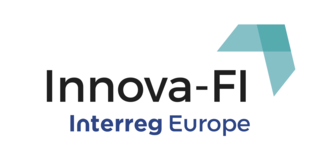Financial Instruments (FIs) transform EU resources under the European Structural and Investment Funds (ESIF) into financial products such as loans, guarantees, equity and other risk-bearing mechanisms. These are then used to support economically viable projects which promote EU policy objectives.
FIs aim to put EU funds to good and efficient use, ensuring that grants are complemented by other financial products so that EU funding can be used time and time again in a revolving fashion. FIs can be combined with technical support or guarantee/interest rate subsidies.
Who manages the Financial Instruments?
The EU Member States who receive funding under the ESIF have a national body known as the Managing Authority (MA) which oversees the use of the available resources. MAs use ESIF allocations and place them in FIs through a Fund of Funds or a financial intermediary from which eligible projects can be financed.

Benefits of FIs
FIs help mobilise additional public-private co-investments and provide a variety of incentives to better project performance. They have been used for financing Structural Funds investments since the 1994-1999 Multiannual Financial Framework (MFF). Their importance increased during 2007-2013 and they now represent around 5 % of total European Regional Development Fund (ERDF) resources. They are expected to play an even stronger role in the 2014-2020 programming period.
The main benefits of FIs can be summarised as follows:
- Revolving nature of funds: Member States place part of their ESI Fund allocations in an existing or newly-created FI. The FI finances projects and when it is repaid by the promoter the FI reinvests the funds plus the interest into other projects.
- Leverage effect: FIs attract public/private investors given the lower risk and long-term nature of projects. This increases the amount of money available for financing, as is the case for JESSICA Urban Development Funds (see examples below).
- Expertise: Public institutions using FIs benefit from the financial expertise of the EIB Group and other administrating financial intermediaries. Technical assistance can also be financed; combining loans, grants and technical assistance in the same FI is possible.
- Incentives for better performance: The repayable nature of FIs means that projects funded through them must prove themselves to be more financially-sound than grant-financed ones. The flexibility and financial accountability rules set out in the 2014-2020 MFF offers more control over the resources.
- Move away from grant-dependency: A (total or partial) switch to FIs offers projects a more sustainable and innovative way of financing rather than the traditional dependence on grants.













